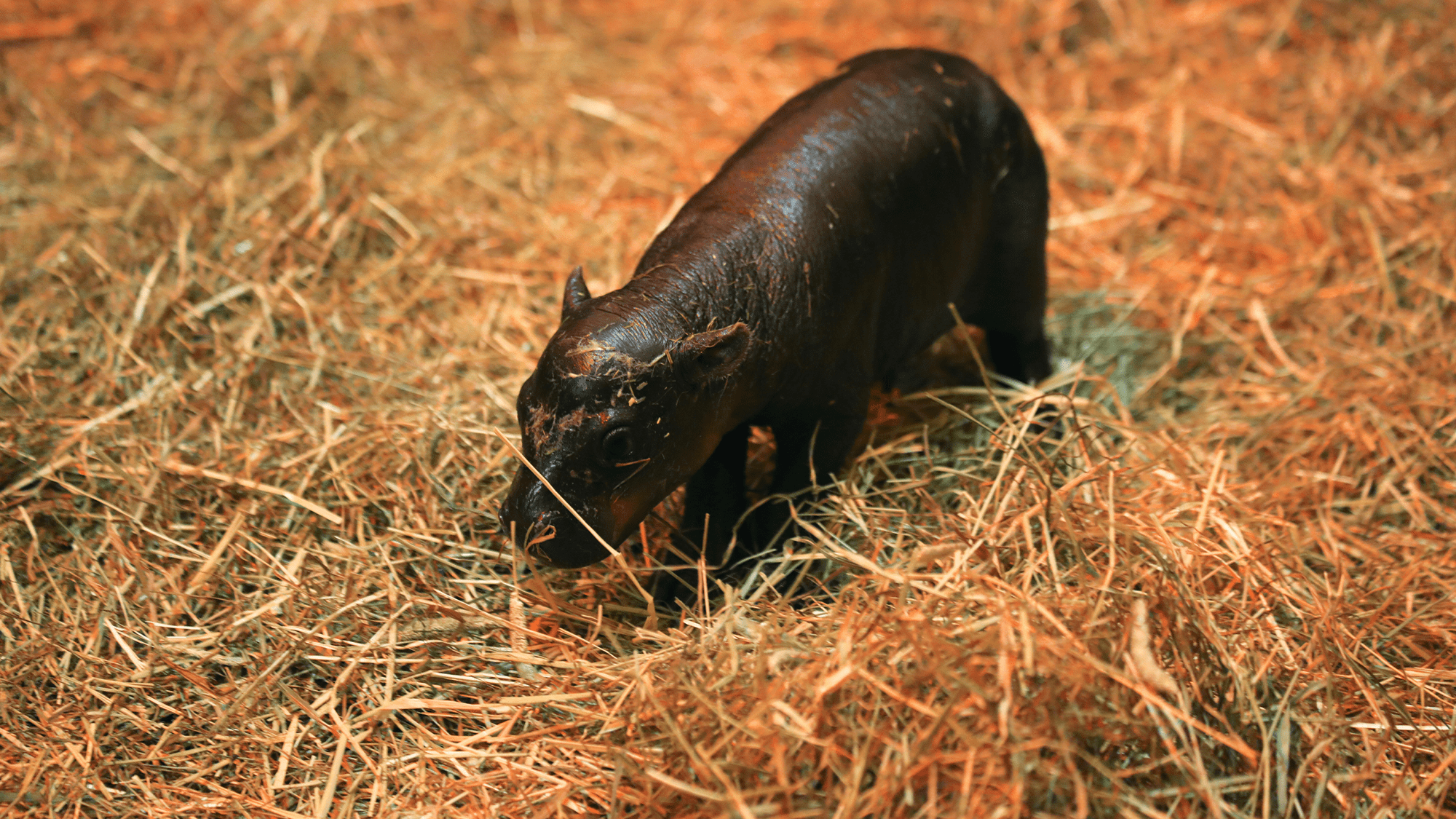Meet Haggis! The tiny pygmy hippo (Choeropsis liberiensis) calf was born at the Royal Zoological Society of Scotland’s (RZSS) Edinburgh Zoo on October 30. The zoo’s adult pygmy hippos Otto and Glorida are the proud parents of this bouncing baby girl.
While Thailand’s internet sensation Moo Deng is known for her feistiness and knee-biting, zookeepers are just starting to see Haggis’ character emerge.
“Haggis is doing really well so far and it is amazing to see her personality beginning to shine already,” Edinburgh Zoo hoofstock team leader Jonny Appleyard said in a statement. “The first 30 days are critical for her development, so the pygmy hippo house will be closed for now to allow us to keep a close eye on mum and baby at this sensitive time.”
CREDIT: RZSS.
Video credit RZSS
Here are some other things to know about this now internet famous group of pachyderms.
Where do pygmy hippos live in the wild?
Pygmy hippos like Haggis and Moo Deng are native to the forests and swamps of West Africa, primarily in Liberia.
[Related: American hippopotamus ranching almost took off 100 years ago.]
How much do pygmy hippos weigh?
Adult pygmy hippos typically weigh between 350 and 600 pounds, roughly the same as some domestic pigs. By comparison, they are about 10 times smaller than a standard-size hippo, according to the World Wildlife Fund. Despite their stocky size, these large mammals can really move. They can run about 18 miles per hour on average, comparable to humans and lizards.
What do pygmy hippos eat?
Similar to cows, pygmy hippos also have four stomach chambers. They spend at least six hours per day eating. They are herbivores, and graze on grasses, roots, stems, and leaves of young trees, fruits, and other vegetation.
To help animals adjust to climates that are not their own, zookeepers will closely monitor their behavior, provide access to cooling or warming stations, and make sure there is enough environmental enrichment like trees, toys, or climbing structures in the enclosure.
[Related: Humans likely wiped out Cyprus’ tiny hippos and elephants in record time.]
Are they endangered?
Pygmy hippos are listed as Endangered by the International Union for Conservation of Nature (ICUN). Only an estimated 2,500 remain in the wild due to habitat loss from logging, minding, and other human activities.
This is also not the first time that humans have threatened this type of species. About 14,000 years ago, paleolithic humans wiped out a similar species of dwarf hippos (Phanourios minor) and dwarf elephants (Palaeoloxodon cypriotes) on the Mediterranean island of Cyprus. A September 2024 study found that paleolithic hunter-gatherers may have first driven the hippos into extinction and then the elephants to extinction in less than 1,000 years.

Which zoos have pygmy hippo exhibits?
While the pygmy hippo exhibit is closed at the Edinburgh Zoo, there are a few other places in the United States where you could spot one including the San Diego Zoo in California, the Pittsburgh Zoo & Aquarium in Pennsylvania, and Lincoln Park Zoo in Illinois. In August, the John Ball Zoo in Grand Rapids, Michigan celebrated their pygmy hippo Jahari’s 10th birthday with a special frozen treat of cantaloupe, carrot, and broccoli with a yam purée frosting.
“While Thailand’s Moo Deng has become a viral global icon, it is important to remember that pygmy hippos are incredibly rare,” said Appleyard. “It is great to have our own little ambassador right here in Edinburgh to connect with our visitors and help raise awareness of the challenges the species face in the wild.”

